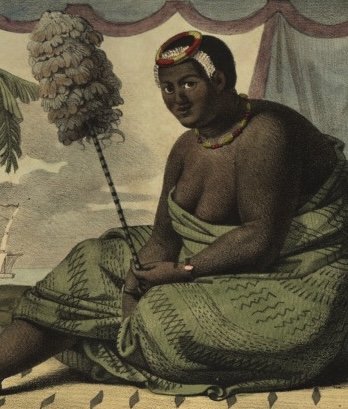Portrait of Kamehameha III, painted in Boston from a daguerreotype, by an unknown artist
For centuries the Hawaiian islands were ruled by various Ali’is (ah-lee’-ee), a Hawaiian word for chief or leader. In 1795, after many wars, mostly among relatives, the islands were united under the rule of Kamehameha the Great (ka-may-ha-may-ha). Like many of his rivals, he had sought military help from Western sailors, particularly the British, mostly in the form of guns and cannons. After establishing his dynasty, Kamehameha continued to engage with Western powers in order to learn and profit from them, but also to protect his kingdom from them. His descendants continued this balancing act through the 1800s as commerce grew, and Western diseases and planters took an increasing toll on the Native population, their lands, and their labor.
On June 7, 1839, Kamehameha III published the Hawaiian Declaration of Rights, also known as the 1839 Constitution. The following 1840 Constitution more comprehensively established the Kingdom as a constitutional monarchy with a bicameral (2 houses) parliament.
Kamehameha III’s intent was always to secure the Hawaiian people’s lands and rights, but we will see in coming weeks how this proved to be a continuous struggle as the kingdom modernized.
Sources:
Kamehameha the Great- US National Park Service
Kamehameha II- Royal Family of Hawaii
Kamehameha III- Royal Family of Hawaii
Forming the Hawaiian State- Punahou School
1839 and 1840 Constitutions- Hooilina.org


